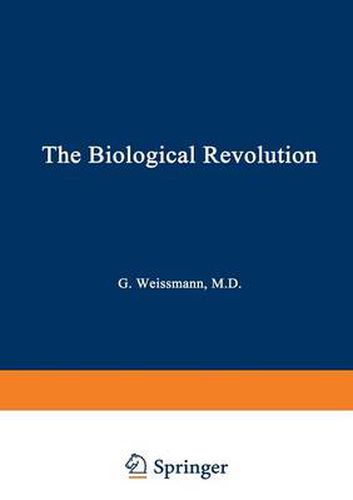Readings Newsletter
Become a Readings Member to make your shopping experience even easier.
Sign in or sign up for free!
You’re not far away from qualifying for FREE standard shipping within Australia
You’ve qualified for FREE standard shipping within Australia
The cart is loading…






This title is printed to order. This book may have been self-published. If so, we cannot guarantee the quality of the content. In the main most books will have gone through the editing process however some may not. We therefore suggest that you be aware of this before ordering this book. If in doubt check either the author or publisher’s details as we are unable to accept any returns unless they are faulty. Please contact us if you have any questions.
Basic biological research is not in trouble, but support for this cultural product is perhaps more fragile than it should be. We have developed, in this country, in Europe, and in Japan a triumphant record of research accomplishment that has rev olutionized our vision of the cell, the body, and the environ ment. The genetic code has been unraveled, the means of neuromuscular transmission have been elucidated, we know the fine detail of the cell’s small geography, and we can de scribe the genes of mouse and man in chemical terms. But it is less clearly perceived by laity and scientist how this new revo lution in biology has been of use in the service of a better medicine or environment. The aim of this series of essays, which grew out of a symposium at the First International Congress of Cell Biology, is to instruct us all in the use that has been made of our new knowledge. In the fields of cancer, behavior, reproduction, genetic engineering, and environmental monitoring, practical results of our new knowledge are already apparent and more are just at hand. But neither the general public nor scientists working in their own narrow disciplines necessarily ap preciate these developments. Perhaps it is all just too new, too experimental, to permit anyone to gain a proper perspective on what we have done or have the potential of doing.
$9.00 standard shipping within Australia
FREE standard shipping within Australia for orders over $100.00
Express & International shipping calculated at checkout
This title is printed to order. This book may have been self-published. If so, we cannot guarantee the quality of the content. In the main most books will have gone through the editing process however some may not. We therefore suggest that you be aware of this before ordering this book. If in doubt check either the author or publisher’s details as we are unable to accept any returns unless they are faulty. Please contact us if you have any questions.
Basic biological research is not in trouble, but support for this cultural product is perhaps more fragile than it should be. We have developed, in this country, in Europe, and in Japan a triumphant record of research accomplishment that has rev olutionized our vision of the cell, the body, and the environ ment. The genetic code has been unraveled, the means of neuromuscular transmission have been elucidated, we know the fine detail of the cell’s small geography, and we can de scribe the genes of mouse and man in chemical terms. But it is less clearly perceived by laity and scientist how this new revo lution in biology has been of use in the service of a better medicine or environment. The aim of this series of essays, which grew out of a symposium at the First International Congress of Cell Biology, is to instruct us all in the use that has been made of our new knowledge. In the fields of cancer, behavior, reproduction, genetic engineering, and environmental monitoring, practical results of our new knowledge are already apparent and more are just at hand. But neither the general public nor scientists working in their own narrow disciplines necessarily ap preciate these developments. Perhaps it is all just too new, too experimental, to permit anyone to gain a proper perspective on what we have done or have the potential of doing.